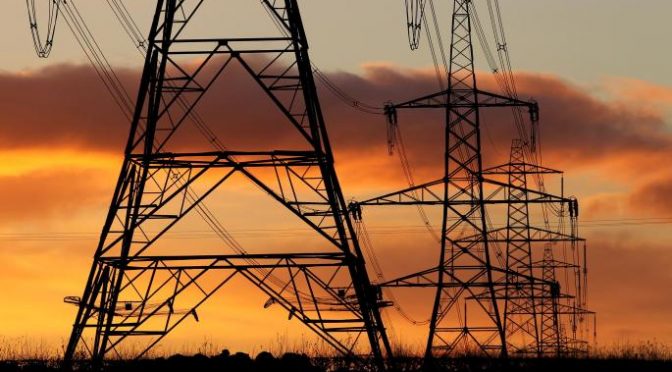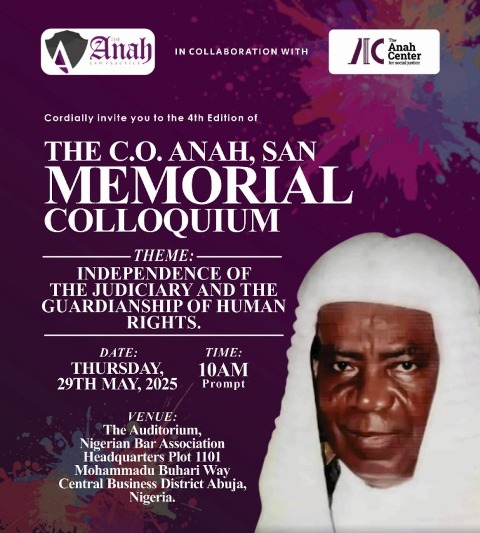By Engr S O Uwaifo
The Nigerian Electricity Regulatory Commission, NERC, produced a new tariff for Nigeria, and the Federal Government, FGN, approved it for implementation. NERC began implementing, but started with only Band A customers. To those customers across the country, the new tariff would apply from April 4, 2024.
Who are these Band A customers? They are the select group of consumers of electricity, who, at the time of negotiation, were willing to pay the price at which the Disco was willing to sell one kWh of electric energy whose statutory characteristics were stated by the Disco, for a daily availability of 20 to 24 hours.
Some will argue as in here, that the financial problems of Nigerian Electricity Supply Industry (NESI) have been reduced to the quantum of Disco’s monthly revenue streams, and that apparently because they could not deal with the engineering and commercial issues that limited it, they decided to increase electricity prices for Band A customers for a start. This is overtly discriminatory, unjust, unfeeling, punitive, but insidious because the targeted customers are in any country those, who make or mar economies including the electric power industry. Without them there would be no NESI. All of Nigeria would have kept to primordial oil lamps and the overly rich would have had their private generators.
This Himalayan increase, along with the straight line meter tariff, will in its aftermath, result in serious reduction in the amount of kWh Discos can sell.
The government did signal its intention to tackle this lingering problem head on, but no one thought that ad hoc chats with engineers, public hearings by NERC on its behalf, and NASS undertaking public hearings, were anywhere enough to resolve decades old problem. This is a most serious engineering and commercial engineering problem affecting the entire country, It’s late for the increase, but it’s not late for the eventual solution. Hand it over to appropriate Engineering experts. The Chartered Institute of Power Engineers of Nigeria, CIPEN, can help.
Some Nigerians have argued that the problem is that there’s too little power generated in the country. That is true only if it is limited to the grid. Note, however, that the grid ought to generate only for available load, and Nigeria’s grid load is stuck currently to about 5000 MW, in total fidelity to the available residential and medium-sized commercial electric load. Therefore the argument discounted the private generation by industrial plants across the country.
In normal situations, residential and commercial electric load would be barely elastic. Even the thinking that Nigeria may have become the poverty capital of the world, should convince us that electric load on our grid will hardly grow at these times when people have been cutting back due to increasing hardship.
Sadly, this is all a continuation of the systemic mismanagement of NESI of several decades. Every government contributed to it. Everyone of them would surround themselves with friends, sympathizers including pseudo experts, and begin chasing after shadows.
Low quantum of monthly revenue stream is a symptom of a crippling disease that no publicly-owned electric utility has ever survived even in the United States of America. The standard solution has always been by financial transfusion, subsidy, followed by aggressive Commercial Engineering, if the utility has the engineers equipped with the knowledge. Sadly, Nigeria has not got any and it needs them.
There are investor-owned electric utilities of course. In the United States, utilities such as American Electric Power, do not expect subsidies; so, they stick to electric utility marketing, Commercial Engineering, which they have perfected. Those investor-owned electric utilities survive, flourish, or sink, according to their marketing capabilities.
Government has to understand that there can be no development unless there is abundant supply of electrical energy. It’s the lifeblood of industrialisation. In Nigeria even the pedestrian supply has been made more difficult by the pathways NERC dreamed up in the areas of regulation and electric rates design. Its bad choices suffered a backlash when the medieval and decrepit networks attracted no investments, though they keep strangling growth and development in every sector deepening Nigeria’s decades long social anguish.
Performance Based Regulation, PBR, is an ultramodern mode of electric utility regulation, which is still to be accepted in all the states of the United States of America, a decade after Nigeria accepted it. They say it limits electric rates legal cases that normally dominate American utility courts. PBR is thought to be more business-friendly than the Cost of Service Regulation, COSR, the other method of regulation. Its weakness is said to be the abundant data required. COSR is simple. It requires no more than the data usually available.
Note that NESI has never once been in court for tariff issues in over seven decades. Under PBR, Nigeria has to deal with a coarse and harsh tariff designed by the Regulator, with little or no electric utility experience. You don’t dare talk to them about jara, but they force-feed you with tales about business friendliness. How? They want to modernise how Nigeria regulates electricity before the country modernises its dominant informal economy! Must carts always come before horses in Nigeria? We say no.
Nigeria is blessed with several primary sources of energy such as geothermal, wind, solar, biomass, coal and hydropower, which are distributed generously across the country. Unfortunately, the military built no power plant in its thirty years in power. Civilians after them have, in spite of abundant choices of resource, limited themselves to gas that became the choice of the world, and grew too expensive. Nigeria’s survival and economic transformation needs careful economic fuel choice for base-load generation and a competent energy mix for general generation for the next decades.
No one that understands rate-making and structuring as well as the circumstances of NESI would choose Straight-line meter tariff structure. It’s hostile to higher energy consumption. Structures are available to incentivise growth and NERC should not have remained unflinching since 2013 while NESI was being destroyed.
Every culture in Nigeria has its jara concept. Rate-making has its block tariff. In common, they both incentivise sales. Straight-line meter tariff does nothing of the kind and you would wonder why NERC needed to creat a harsh aura around electric energy. The structure is coarse and hostile to industrialisation. Disco would often shop for more money. It would list services such as prompt response to power failure, which is inherent in electric utility business. It would term them Prestige or Premium service, and would demand that customers pay more for them. And the Regulator who was absent when Disco negotiated with the customer, would approve.
Meanwhile, NERC had not thought it necessary that Disco should have a Customer Service Policy document written, published and advertised for customer education. Why the hide and seek?
The end of the seeming collusion between NERC and Disco is the N225/kWh rate imposed on Band A customers across Nigeria. For some of those customers, that would be a monthly cost of electricity that would double the monthly expenditure for food and beverage for wife and husband. That’s like mounting food on an altar rooftop high, and asking the lame and famished to reach for it.
Electric utilities serve every customer. Traditionally, it divides them into three main customer groups: residential, commercial, and industrial. Each has its demand characteristics such as inelastic, elastic, and very elastic according to whether they are residential, commercial or industrial demand. The same utility serves the group except in Nigeria after industries broke with NESI in the upper 1980s because it could not provide electricity as prescribed by the statute.
Quite noticeably, Dunlop and Michelin, both international Motor tyre manufacturers, left Nigeria at that time. Industries that wanted to remain, built their individual power plants, creating parallel utilities from which NESI has not recovered because of the deleterious effects the exodus had on the overall economy and its earnings.
Elsewhere, especially in the United States, electric utilities prompt or entice industries to their areas of franchise because they are the principal drivers of successful electric utilities. In Nigeria, industries die all the time because they cannot compete with others of other countries in the local market. Governments intervene many times, but smugglers always have their way.
Often, the key reason is that industries had passed onto their products, horrendous manufacturing costs due to huge spending on in-house power. How distressing to look back at anaemic NESI, as it watched industries as they died. Now on its deathbed, it has no industries to pay its hospital bills. Its problem was and remains that it has not learned commercial engineering. In six decades? That is ludicrous! Yet it has to be corrected, or electric utility practice in Nigeria will remain the joke that it is.
In their book, Development of the Nigerian Electric Power System (1973 — 1990) Nigeria’s late and beloved Engr. Lawrence Abiodun Amu, F.A.Eng., and Engr. Foluseke Abidemi Somolu, F.A.Eng., described Nigeria’s distribution networks as ‘the untidy “last mile” in the electricity supply chain.’
The networks were and are still medieval in design. When both engineers described it, it had gone decrepit with age and lack of maintenance. Since then it has been rehashed repeatedly across Nigeria. Now in the 2020s, it should be expected to be totally incapable of supporting industrial health and development, forty years or more after industries quit them. Best practices have found that networks of poles, insulators, and conductors, have a useful life of forty years. In Nigeria we seem to believe that they live forever, and we are paying dearly for that belief.
Nigeria should re-engineer and rebuild these networks to solve the sectors lingering financial problems. Indeed, the medieval design networks with its lack of flexibility has been Nigeria’s Achilles heel for decades. Definitely government is serious this time, otherwise it would not have countenanced the murderous rates it imposed on Band A customers. Can it with that seriousness solve the network problems now? In outline, what we need to do, probably phased, is to strip the networks of all secondary distribution lines, that is, end distribution at utilisation voltage and replace it with distribution at primary distribution voltage, which was first recommended to Nigeria in a paper published in The Nigerian Engineer in 1969, but typically Nigerian, acceptance and implementation came three decades after the introduction.
A sprinkling of distribution at primary voltage exists side by side with the other and since it will remain a radial system, nothing is really new except that we would clear the networks of its debris or surplus wires. In place of huge distribution transformers on many streets, we will need a large number of smaller ones whose sizes will be decided as part of the re-engineering process.
The Himalayan rise in Band A rate will exacerbate suffering and deepen poverty in the land, but will achieve little else. By approving the tariff that NERC made, government shot itself in the foot. It should have known that the problem is not just about the quantum of Naira, but about a system destroyed by incompetence; the proverbial square pegs in round holes at all levels, over the years.
Nigeria has supplied power to residential and commercial customers with hardly any industrial consumption since the late 1980s. It had to have been at colossal cost because the mix of customers was wrong and load factors were low while we hoped in futility for growth. Industries were on their own serving themselves with power at crippling costs. Their businesses declined, but they didn’t stop hoping that relief would come. It was an awful combination of problems that harmed Nigeria, its people and its economy. The situation remains dire and Nigeria needs to get out of it, quickly.
It’s hard to quarrel with the idea that NESI needs more money from its business. But at the same time, it’s easy to understand that government making people pay to cure a symptom and to accept a return to shoddy services after, is ridiculous and unworthy of rational governance. Why should Nigeria suffer and pay more while the problems remain? There were engineers appointed by government and paid taxpayers money to prevent this. This is why government should hold itself bound to subsidise NESI until the problems are resolved within five years of its decision to act.
In economies across the world, the only way to bring electric rates down for residential use is to ensure higher industrial productivity, which makes load factors climb higher. Electric utilities do this through symbiotic marketing by its Commercial Engineering departments. Unfortunately, NESI had Commercial Engineering Departments from 1951 to 2013, but never practiced Commercial Engineering from about 1963 after the colonial era appointee Chief Commercial Engineer returned to the UK. For all those years governance allowed NESI to get away with that.
As it is, to solve Nigeria’s lingering power supply problem, government should ensure that public networks wherever they are in Nigeria, supply electricity with characteristics exactly as they are defined by the statute, and that all industries are connected to the public networks. That is the solution to the problematic nightmare of NESI — a problem like a needle in a haystack. Let’s end the long and self-sustaining decadence.
This is not to suggest that there are no problems in generation and transmission. Those problems are mostly typical of power systems and they are known to the engineers that operate them. They are not beyond their capabilities to solve whenever government policies are right, and clear, and funds are available.
The quickest way forward is to start the process of re-engineering and rebuilding the networks now with improved technology as previously described. There should be adequate controls provided for operational flexibility. That should very drastically reduce voltage and energy losses and ensure much higher economies of scale, without which power supply in Nigeria will remain a mirage. Higher economies of scale achieved, should rebound to Nigeria’s ability to serve its people electricity at the lowest possible cost without recourse to overt discrimination as overzealously and blatantly dished out by NERC.
Several stories have been told of where the problems of NESI began. That’s history. What’s important at this point is to solve the problem. It is submitted and affirmed here that the preceding paragraphs of this post are the recommended engineering solutions. Government is assured that it would have taken the right and appropriate steps to solve a problem that has been intractable since the 1980s. However, TCN and Gencos should have close looks at their links in the power supply chain for uncompleted projects.
An inchoate problem made urgent by the signing into law of the 2023 Electricity Act, is provision of adequate 330-kV service to every state capital. Places such as Lagos and Abuja should have a minimum of six injections from different directions to avoid weather disruptions. No state capital should have less than three 330-kV injections.
In the rehabilitated and revamped situation envisaged, a good guess of peak load will be higher than 20,000 MW and growing.
Nigeria should prepare for a massive retraining of engineers in every area. Every engineer must learn planning economics. NAPTIN and technological universities should be equipped with the right manpower to teach the various specialties.
NERC works with people from other disciplines, but that it is an engineering organisation, can hardly be denied. It’s led and should always be led by an engineer, who should be competent and experienced for the task. Engineering is at the heart of the NESI mess. There’s no doubt that tariff is a crying shame. Everyone and everything has its tariff. Ridiculous in the extreme. How and who bills these if we weren’t using prepayment meters? Yet most village customers can’t use enough energy to pay for monthly amortising the cost of a prepayment meter. There are two options for addressing this. Concerned Disco should deploy Credit meters or there should be a resort to flat rate tariff. For each of the options, Commercial Engineers specialised in rate-making are needed.
Electric utility concept of mass electric service to customers as proposed by Thomas Alva Edison and Samuel Insull, remains true. And let’s be clear, creating a plethora of cost centres to extort money from hapless customers, is a disservice to humankind. In Lagos, Nigeria, Maryland Crescent, Shonibare Estate, Cappa Estate and GRA Ikeja are separated by walls and a road, Bank Anthony Way, but residential customers in those places pay different electric rates though fed by the same primary feeder! Price difference for living across walls and the opposite sides of same road? This is Nigeria!
Has NERC allowed true electric rates fall where they may? What population of cities and places did NERC use for its computation? There’s no reason for Ikeja to pay the same electric rate as Epe. Why should Kaduna pay the same electric rate as Zaria? Has Nigeria appetite for egalitarian tariffs? Has NERC used true unit cost per kilowatt for every town and location? These are fair questions to which experts will need answers, which will help them free Nigeria from electric power supply inadequacies. Engineering intends thorough application because human life depends upon it.
Uwaifo (F.A.Eng), a former District Manager of Northern Region, defunct Electricity Corporation of Nigeria (ECN), poet, playwright, author and joint winner of the LNG Nigeria Prize for Literature in 2004, as well as an Eisenhower Fellow, writes from Lagos.





